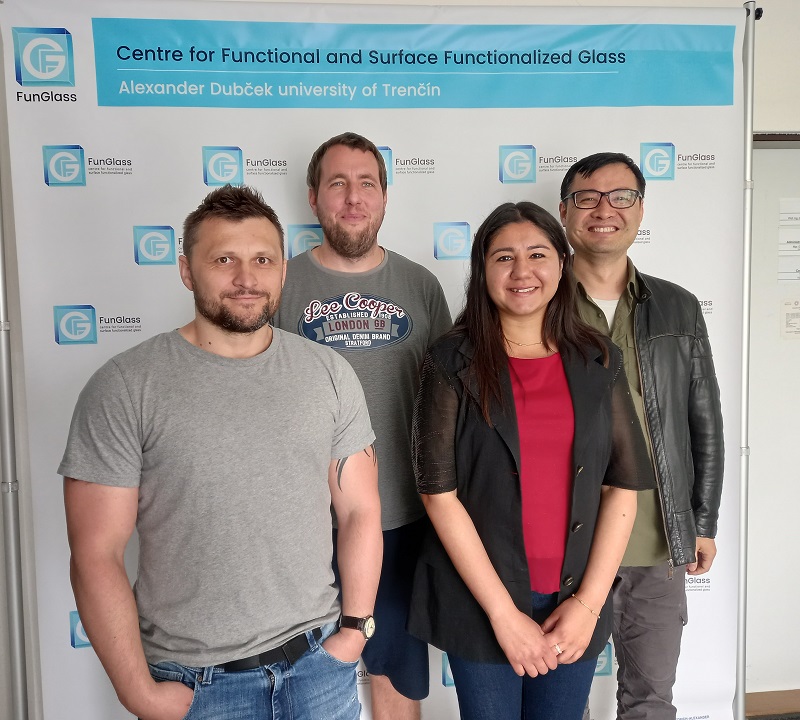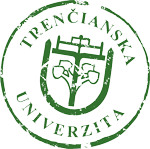Four projects approved by VEGA grant agency
 That´s pleasure for us to announce that four FunGlass projects have succeeded and will be funded by VEGA grant agency of the Ministry of Education, Science, Research and Sport of the Slovak Republic.
That´s pleasure for us to announce that four FunGlass projects have succeeded and will be funded by VEGA grant agency of the Ministry of Education, Science, Research and Sport of the Slovak Republic.
Congratulations to all leaders of projects and their teams!
Here is an overview of project titles and their authors:
- Systematic study of the influence of corrosion factors on structural changes of glass used for biomedical purposes (VEGA 1/0021/23)
Principal investigator: Dr. Branislav Hruška
Annotation: The issue of corrosion and weathering (eg by the action of bio-active drugs in vials, but also during storage and ocean transport) of glass is constantly paid considerable attention. The production of glass itself is burdened by a large carbon footprint, so any degradation of the product,or the material, can cause not only large financial but also environmental impacts. The aim of the project is to study the surface morphology and corrosion processes of selected types of glass intended for biomedical purposes. One of the possibilities of studying the corrosion process is to prepare model glass with a chemical composition identical to the glass used in medicine and to subject them to a comprehensive examination in the corrosive environment. This approach will provide results that will allow a more detailed view of the corrosion mechanism of the examined glass and thus contribute to the optimization and selection of glass suitable for these applications in accordance with the methods of their use and storage.
- Hierarchical porous scaffolds and hydrogel composites from bioactive glass nanoparticle/microsphere with multi-therapeutic effect for regenerative medicine (VEGA 1/0057/23)
Principal investigator: Dr. Si Chen
Annotation: The proposed project aims to fabricate hierarchically porous bioactive glass scaffolds that mimic cortical bone for bone regeneration. The combination of bioactive glass microspheres/nanoparticles, freeze-drying and 3D printing, is expected to construct hierarchical porous scaffolds with oriented submillimetre pores (200-400 microns), and micron pores (10-80 microns), and nanopores. The ratio of microspheres/nanoparticles, the structure of sacrificial scaffolds, freeze-drying and sintering conditions will be optimized for optimal mechanical properties, as well as efficiency of angiogenesis and cell penetration. The microspheres/nanoparticles will also be doped with therapeutic ions including boron, cobalt, zinc, cerium, bismuth and gallium to achieve angiogenesis-promoting, antibacterial and anti-inflammatory biofunctions. Multifunctional hydrogel composites will also be derived during porous scaffold preparation for small bone defect repair, wound healing, and soft tissue regeneration.
- Sustainable upcycling of pharmaceutical glasses to highly porous photocatalytic ceramic membranes for water (VEGA 1/0110/23)
Principal investigator: Dr. Akansha Mehta
Annotation: Currently the need to preserve the environment has drawn much attention, especially for processes involving glass recycling and treating industrial wastewater. Ceramic membranes combined with photocatalysis are useful green systems for wastewater treatment. The limitations directly affect the membrane performance, for example: porosity, higher fabrication/operation cost, loadings of TiO2, membrane fouling. Keeping the limitations in mind, an innovative strategy is proposed to fabricate photocatalytic ceramic membrane which focuses on microstructure integrated with chemistry and functionalities of membranes. Firstly, the fabrication of membranes via upcycling of waste pharmaceutic glasses in terms of achieving the highest open porosity (>70%), immobilizing TiO2 to achieve long-term stability/reusability will be accomplished. Secondly, new 3D printing techniques will bring an unprecedented opportunity to modify the design of membranes and surface patterns depending on the organic moieties present in wastewater.
- Development of highly adherent bio-based epoxy coatings on aluminum alloys (VEGA 1/0242/23)
Principal investigator: Dr. Milan Parchovianský
Annotation: Epoxy-based coatings are one of the most applied materials for corrosion protection. The increased interest in bio-based epoxies emerges as an alternative to the toxic Diglycidylether of Bisphenol A (DGEBA), employed in several consumer and industrial applications. However, inter-layer adhesion of epoxy coatings is a complex phenomenon depending on chemical bonds, functional groups, and roughness, making it prone to blistering. Furthermore, a good adhesion may not always guarantee long-term corrosion protection, since all organic coatings will physically and chemically age with time. Therefore, we propose the development of a bio-based epoxy-silica topcoat and a silane primer seeking excellent adhesion and corrosion protection to aluminum alloys used in the aerospace industry (AA2024 and AA7075). The main strategy consists of covalently bonding an eco-friendly epoxy topcoat to a silane primer and substrates, resulting in an efficient bilayer system that can meet the most demanding anti-corrosion applications.












